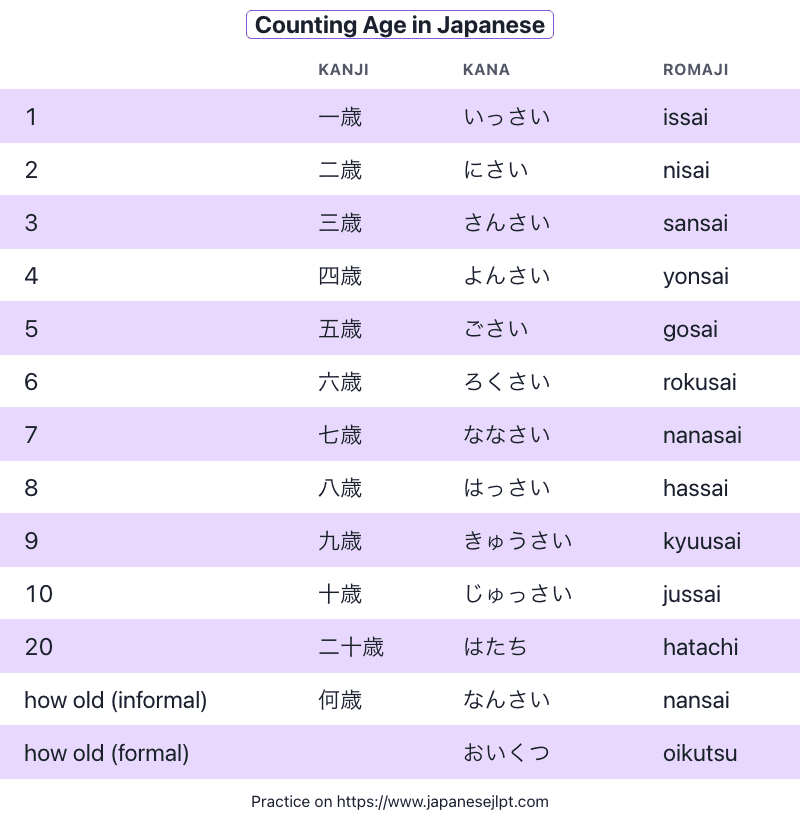Counting Age in Japanese

The Japanese counter for counting age is 歳 (sai). Adding "sai" to a number in Japanese serves a similar function as attaching "years old" in English.
Practice counter 歳 (sai):
Take a look at the table below for a comprehensive reference on how to count age in Japanese, including representations in kanji, hiragana, and romaji.
| Audio | English | Romaji | Japanese | Kana |
|---|---|---|---|---|
| 1 | issai | 一歳 | いっさい | |
| 2 | nisai | 二歳 | にさい | |
| 3 | sansai | 三歳 | さんさい | |
| 4 | yonsai | 四歳 | よんさい | |
| 5 | gosai | 五歳 | ごさい | |
| 6 | rokusai | 六歳 | ろくさい | |
| 7 | nanasai | 七歳 | ななさい | |
| 8 | hassai | 八歳 | はっさい | |
| 9 | kyuusai | 九歳 | きゅうさい | |
| 10 | jussai | 十歳 | じゅっさい | |
| 20 | hatachi | 二十歳 | はたち | |
| how old (informal) | nansai | 何歳 | なんさい | |
| how old (formal) | oikutsu | おいくつ | おいくつ |
Age (years old) in Japanese
What is the difference between 才 and 歳?
In Japanese, both 才 (sai) and 歳 (sai) are used for counting age. Due to the complexity of the Kanji 歳, it is alternatively written as 才 for simplicity.

